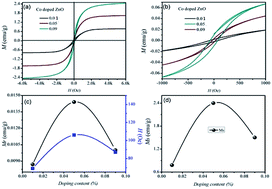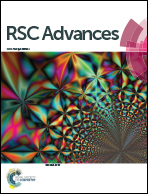Diluted magnetic semiconductor properties in TM doped ZnO nanoparticles
Abstract
The hydrothermal method was used to create dilute magnetic semiconductor nanoparticles of Zn1−xCoxO (x = 0, 0.01, 0.05, 0.09). The effect of cobalt doping on the microstructure, morphological and optical properties of Zn1−xCoxO was also studied and the Co doping to host ZnO was confirmed from XRD and EDX analysis. The structural analysis showed that doping of cobalt into ZnO decreased the crystallinity, but the preferred orientation didn't change. SEM analysis revealed that the cobalt dopant did not have a strong influence on the shape of the synthesized nanoparticles. No defect-related absorption peaks were observed in the UV-Vis spectra. The crystallinity of the doped samples was improved by high growth temperature and long growth time. Ferromagnetic behavior above room temperature was detected in co-doped ZnO nanoparticles. The ferromagnetic behavior increased with increasing Co (up to x = 0.05) doping. The ferromagnetic behavior declined when the Co content was further increased. Related research shows that doped ZnO nanoparticles have better dielectric, electrical conductivity, and magnetic properties than pure ZnO. This high ferromagnetism is usually a response reported for dilute magnetic semiconductors. These semiconductor nanoparticles were further used to designed spintronic based applications.



 Please wait while we load your content...
Please wait while we load your content...